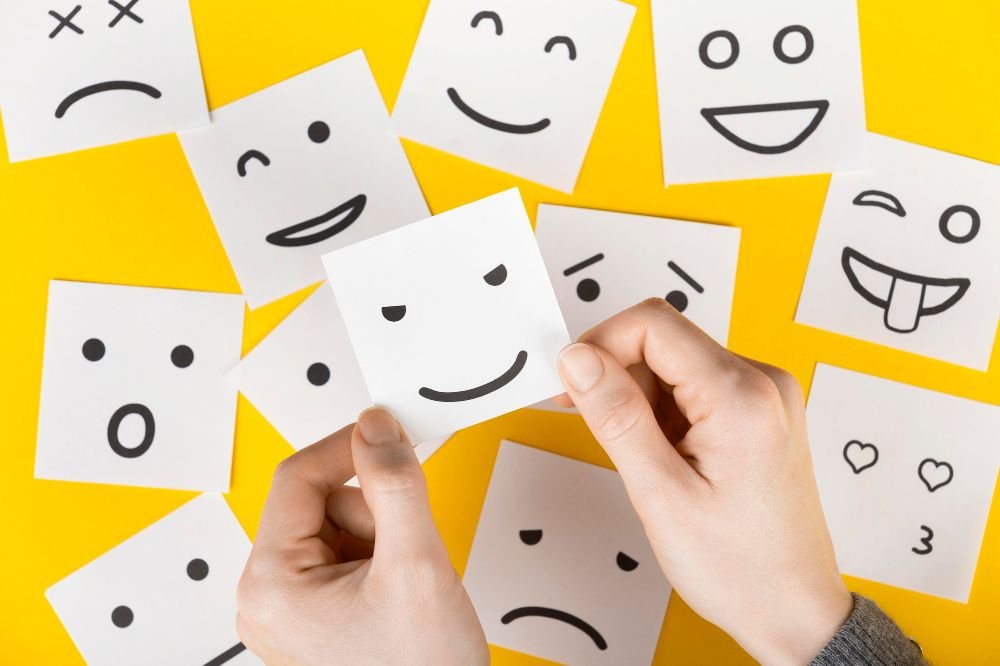In the fast-paced modern landscape, where the demands of life tug us in various directions, the mastery of emotional regulation techniques emerges as a paramount skill.
Greetings and welcome to a comprehensive investigation of the complex realm of emotional regulation strategies, intended to assist those facing emotional upheaval.
It’s more important than ever to have efficient techniques for managing and balancing emotions when facing the challenges of the job, family relationships, or social encounters.
The sacrifices that come with balancing life’s many facets are explored in this article, which also looks at the challenges posed by various methods of emotional control.
Fundamentally, the main idea centers on implementing seven effective techniques, each of which is a key that opens the door to emotional balance.
How to achieve Inner Peace in Just 7 Minutes a Day!
Understanding Emotional Regulation Techniques
Embarking on the journey of understanding emotional regulation techniques (ERT) is akin to unraveling the intricate threads that weave the tapestry of our emotional experiences.
It’s about acknowledging the very essence of what makes us human – our emotions – and learning the art of navigating them with grace and resilience.
At its core, ERT is not a rigid set of rules but a dynamic skill set that empowers individuals to manage and respond to their emotions effectively.
Picture it as a personalized toolkit, each technique a unique instrument designed to harmonize the symphony of emotions within us.
The journey starts with a fundamental step: acknowledging your emotions. It’s about recognizing the shades of joy, sorrow, anger, and everything in between.
This self-awareness lays the groundwork for the subsequent steps in emotional regulation.
1 – Acknowledge Your Emotions for Effective Emotional Regulation Techniques (ERT)

The first and most important step in learning Emotional Regulation Techniques (ERT) in the complex dance of emotions is a straightforward yet powerful act: admitting your emotions.
It’s about making a space for yourself where you can identify and give names to the emotions that come and go throughout your day-to-day existence.
Think of this procedure as watching the subtle nuances on your emotional painting while facing a mirror.
Rather of passing judgment, the goal is to compassionately acknowledge the many shades of happiness, sorrow, frustration, and fulfillment.
The foundation of emotional intelligence, this recognition is the key that opens the door to efficient emotional control.
You can have a better understanding of your triggers and reactions by granting yourself permission to feel.
It’s an invitation to be present with your emotions, allowing them to be seen and heard.
This self-awareness creates the groundwork for the other ERT steps, giving you a strong base from which to negotiate the intricacies of your emotional terrain.
Recognize your feelings as important messages that each contain knowledge about your inner world rather than as flaws.
Every feeling has a tale to tell, whether it is the thrill of achievement, the pain of failure, or the coziness of a close relationship.
Through this process, you take on the role of the storyteller, crafting a narrative about your emotional encounters and developing your mastery of the emotional control technique.
So let’s start this self-awareness journey together, where recognizing your feelings turns into the empowering spark that creates a more robust and balanced version of yourself.
2 – Mindfulness Meditation: A Core Component of ERT
A vital part of Emotional Regulation Techniques (ERT), mindfulness meditation seems as a lifeline in the hectic world of today.
This is a practical method for finding peace amid the chaos of everyday life, not an abstract practice meant just for yogis on mountain tops.
Being mindful Through meditation, people can watch their feelings without passing judgment because it creates a mental sanctuary where the din of thoughts becomes quiet.
It’s an exploration of the present moment, a place where the mind quiets itself from incessant noise and develops self-awareness and emotional control as a result.
Including mindfulness meditation in your daily routine transforms it from a practice into a significant investment in your mental health.
Don’t miss out on the life-changing meditation program!
3 – Healthy Coping Mechanisms: Integrating ERT into Daily Life
As life presents its fair share of obstacles and victories, constructive coping strategies act as sentinels, preserving internal emotional balance.
These mechanisms, which are an integral part of Emotional Regulation Techniques (ERT), are individualized techniques designed to meet your specific needs rather than strict prescriptions.
Taking up a hobby, getting support from loved ones, or exercising aren’t just something to do; they’re doorsway to healthy ways to decompress.
ERT entails realizing that life is a series of compromises, and that you may manage these concessions without sacrificing your wellbeing by developing good coping mechanisms.
It’s about building a toolset that works for your journey towards balance, accepting the ups and downs of emotions, and cultivating resilience.
4 – Cultivating a Supportive Social Network for ERT
In the symphony of emotions, the significance of a supportive social network cannot be overstated.
Cultivating meaningful connections is not just a facet of life; it’s a pivotal aspect of Emotional Regulation Techniques (ERT).
This is about creating an environment where sincere communication and understanding flourish rather than about surrounding yourself with an audience.
A helpful social network gives a forum for advice and experiences to be exchanged among friends, family, and coworkers.
In the context of social relationships, ERT entails giving as well as receiving assistance.
Empathy and understanding turn become the currency of emotional well-being in this reciprocal dance.
Let’s acknowledge that a supportive social network plays a crucial role in promoting emotional regulation and inner peace.
5 – Establishing Healthy Boundaries as an ERT

Setting up healthy boundaries becomes a vital brushstroke in the delicate art of Emotional Regulation Techniques (ERT), painting a picture of emotional well-being and self-care.
This is about creating bridges that respect your mental and emotional space, not about erecting walls.
ERT entails realizing the delicate balance between self-preservation and compromise, as well as the fact that establishing sound limits is a necessary rather than selfish act.
It’s about voicing your needs, setting boundaries in both personal and professional contexts, and taking the necessary steps to empower yourself to prioritize self-care without feeling guilty.
6 – Cognitive Restructuring: A Strategic ERT Approach
When feelings twirl through the mental maze, cognitive restructuring serves as the tactical director, pointing the way in the direction of emotional balance.
This methodical technique to confronting and altering unfavorable mental patterns is not a supernatural recalibration.
Identifying erroneous beliefs and substituting them with well-reasoned concepts is the field of cognitive restructuring in emotional regulation techniques (ERT).
Through a shift in perspective, people might lessen the severity of unpleasant feelings by reframing events.
ERT, with cognitive restructuring at its core, becomes a transformative journey towards a more resilient and positive mental landscape.
Effortless Brainwave Therapy for Anxiety.
7 – Seeking Professional Help for Specialized ERT
Sometimes, amid the complex fabric of emotional health, getting professional assistance shines like a bright light.
Emotional Regulation Techniques (ERT) recognize that navigating the intricacies of emotions can be difficult at times.
In addition to being skilled professionals, therapists and counselors are seasoned mentors who may provide individualized insights and coping mechanisms.
It takes guts to seek professional assistance, but doing so is a brave first step in learning the skill of emotional control.
It’s an admission that certain emotional landscapes are enhanced by the knowledge of people who are deeply acquainted with the complex subtleties of the human psyche.
As we explore the depths of Emotional Regulation Techniques, let’s accept the idea that getting expert assistance is a valuable step toward reestablishing inner peace, not merely an alternative.
Conclusion Mastering Emotional Regulation Techniques
Learning how to control your emotions is a self-discovery process that requires self-awareness, wholesome behaviors, and a readiness to ask for help.
Through the acceptance of emotions, the practice of mindfulness, and the application of the suggested techniques, people can maximize their well-being while navigating life’s compromises.
Adopting these methods not only promotes mental health but also gives people the resources they need to bring inner balance back into many facets of their lives.





